On Thursday, November 17, Tufts University’s Center for Information and Research on Civic Learning and Engagement (CIRCLE) joined Brookings’ Governance Studies to discuss the millennial vote in the 2016 election. CIRCLE, a nonpartisan research center at Tufts’ Jonathan M. Tisch College of Civic Life, is a leading institution for understanding the young adult vote and informing policy and practice to ensure youth development and democratic health. The event began with a presentation from CIRCLE Director Kei Kawashima-Ginsberg and Director of Impact Abby Kiesa.
While many expected the low favorability ratings of the two candidates and the divisiveness of this election year to keep young voters home, 2016 saw similar rates of young adult turnout as 2012. On election day, Hillary Clinton won the youth vote (55 percent) while Donald Trump only garnered the support of 37 percent of the millennial electorate. Comparatively, in 2012, young adults voted for Barack Obama over Mitt Romney by 60 percent to 37 percent.

While a plurality of young voters preferred Clinton, throughout the election, young adults were divided on key issues.

The election showed significant cleavages in the youth electorate. Leading up to the election, polls showed that 67 percent of black youth and 36 percent of Latino youth were “scared” of the possibility of a Trump presidency. Kawashima-Ginsberg argued that fear was a big driver in pushing these demographic groups to support Clinton in the election. A majority of Trump’s young voters, on the other hand, were white. This group, however, was divided along gender lines. Among white young adults, 46 percent of males supported Trump, while only 33 percent of females did.

Image by CIRCLE.
Overall, Trump won one-third of young voters, a greater number than pre-election polls suggested he would. Notably, 32 percent of these young Trump supporters were excited by the prospect of a Trump presidency while only 18 percent of young Clinton supporters reported being excited about their candidate.

Looking beyond 2016, the millennial electorate is expected to impact how politics is conducted in a two-party system. In 2016, young adults were more likely to identify as liberals but were less likely to identify as Democrats. Similarly, while young Trump voters were characterized by their energetic support for the Republican candidate, the growth of young people identifying as Republican has remained static. In fact, only one-third of young adults hold a favorable view of the Republican Party.
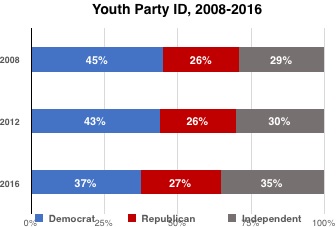
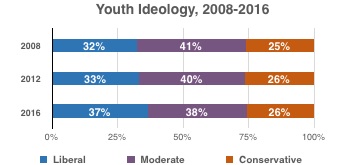
Kiesa argued these inconsistencies likely arose because young people believe parties are unable to advance their views. Kiesa suggested that as young people age, we may see less commitment to the parties as major vehicles of civic participation. In a panel discussion following the presentation, Jane Coaston, a political reporter for MTV Networks, offered that the parties should rethink how they appeal to key constituencies and build political party membership. She noted that a more ground-up approach to party organization would allow voters to convey to the parties the issues they care about, rather than the current strategy: assuming voters will inherently prioritize party identification at the ballot box.
All the panelists offered suggestions for youth political involvement moving forward. Kiesa discussed the divides among young people that led to Tuesday’s result and the ensuing public backlash. While one-third of young adults voted for Trump, other young adults have taken to the streets to protest the election outcome. She argued that young people will play an important role in mending America’s “civic fabric.”
Coaston emphasized the importance of cultural organizing that makes all young people feel involved and represented. While she acknowledged the role celebrities played in this campaign season in appealing to young people, she argued that for many facing obstacles at work and at home, using celebrities as vehicles to engage voters may have been less effective. She said that in order for young people to be heard and wield influence, focusing on local political battles would prove crucial.
Video Clips
The Decline of Party Identification?
Jane Coaston, a political reporter at MTV News, discusses the greater likelihood that millennials identify with an ideological leaning than a political party. She argues that the parties should rethink their strategy to ensure they can continue to be important vehicles for civic participation.
How to Begin Tough Conversations in Trump’s America
Carmen Berkley, the Civil, Human, and Women’s Rights Director at the AFL-CIO discusses how voters who disagree with one another can find common ground through starting conversations about how racism and sexism affect all Americans.
Fighting the Trend of Anti-Intellectualism
Kei Kawashima-Ginsberg, the director of the Center for Information and Research on Civic Learning and Engagement, argues that the trend of anti-intellectualism poses a threat to American democracy as citizens prefer to seek out simplistic messages that confirm pre-existing views.
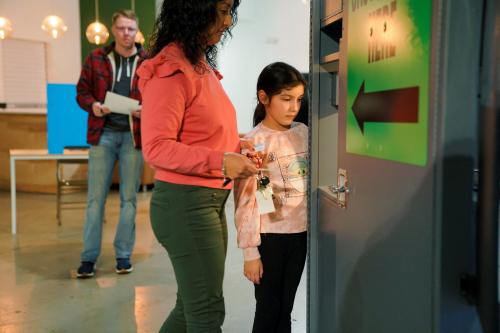
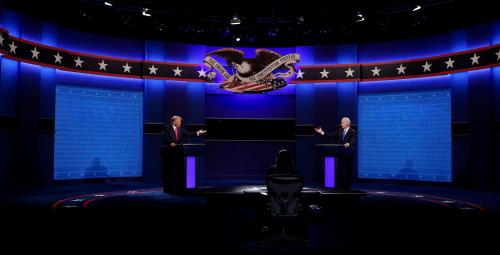
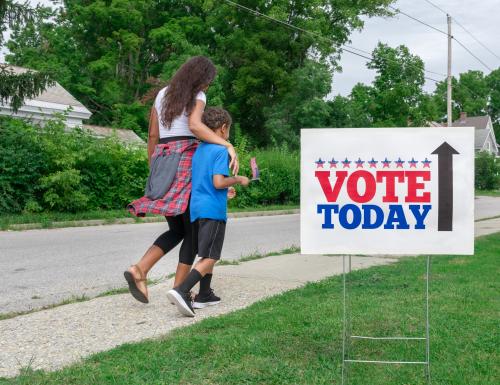





Commentary
How Millennials voted this election
November 21, 2016